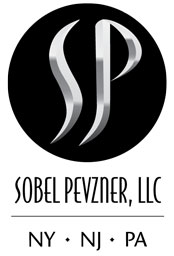Brake Repair by Sears Did Not Provide for Liability in Fatal Collision
This Kings County action arises out of allegations that Sears was negligent in its repair of the plaintiff operator’s rear brakes. Such negligence was claimed to be the proximate cause of a motor vehicle accident. After submission of a motion for summary judgment by the attorney’s for Sears, the Honorable Judge Silber—a highly-regarded member of New York State’s bench—found that there were no issues of fact with regard to liability, granting of Sears’ motion for summary judgment.
In early 2013 the driver of the subject vehicle lost control, accelerated through an intersection with a steady red light at a high rate of speed and drove onto a sidewalk, causing injury to numerous pedestrians, including an infant who later died. The driver alleged that the rear brakes failed as she attempted to stop the vehicle prior to crashing. The allegations against Sears were founded upon service on the subject vehicle two weeks before the accident. As part of that service, a Sears Auto Technician replaced rear rotors, brake pads, along with replacing the anti-lock braking system on the subject vehicle.
Due to the nature and extent of injuries sustained in the subject incident, NYPD Detectives, and an Administrative Law Judge became involved in the investigation of the motor vehicle accident. One of the investigating detectives found that if the driver had depressed the brakes and the brakes had failed, her car would not have continued to accelerate on a flat surface, as the street she was driving on was not downward sloped. Subsequently, another NYPD detective took over the investigation and was able to download the Power Control Module data of the driver’s vehicle. This detective’s investigation found that the brakes were not at issue, and the actual cause of the crash was the driver pressing on the accelerator, instead of pressing the brakes.
Thereafter, Administrative Law Judge Berger found that the driver was in violation of three sections of the Vehicle and Traffic Law and one section of the New York City Traffic Rules. Following a DMV administrative hearing, Judge Berger suspended the driver’s license and found her to be at fault for the subject incident. Based on these facts the attorneys for Sears moved for summary judgment, arguing that that there are no triable issues of fact, and that the decision of Judge Berger’s findings, was entitled to res judicata in the plenary action against Sears further requiring dismissal of said action.
Further, citing to the Appellate Division, Second Department, where there is only “a shadowy semblance of an issue or bald conclusory assertions, even if believable, are not enough to defeat a motion for summary judgment.” Pizzi v. Bradley’s Div. of Stop & Shop, 172 A.D.2d 504, 567 N.Y.S.2d 852 (2nd Dept. 1991). Thus, the Court would not deny Sears motion merely due to the testimony of the driver that she had pressed the brakes, which failed, when all of the other objective evidence—including an expert engineers report—concluded that the driver accelerated at the time of impact by pressing on the gas.


